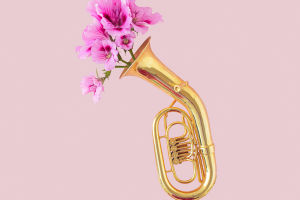Ikebana, the traditional Japanese art of flower arranging, transcends mere decoration to embody a deep philosophical and spiritual connection with nature.
Originating in Japan over 600 years ago, Ikebana is more than just arranging flowers; it is a meditative practice that reflects the beauty and harmony of the natural world in an artistic form.
The art of Ikebana represents a unique synthesis of creativity, spirituality, and nature, allowing practitioners to capture and celebrate the ephemeral beauty of flowers in their simplest, most elegant forms. The roots of Ikebana can be traced back to the practices of the 15th century, where floral offerings were made in temples. This initial practice of arranging flowers evolved over time into a sophisticated art form. By the 16th century, Ikebana had become a refined aesthetic discipline, deeply integrated with Japanese culture and its philosophical traditions. The practice of Ikebana is guided by principles that emphasize simplicity, harmony, and the natural beauty of each element used.
Central to Ikebana is the concept of "shin, soe, and tai," which represents the three main components of an arrangement. "Shin" symbolizes the heavenly or spiritual element, "soe" represents the earthly or human aspect, and "tai" stands for the harmony between these two forces. This triadic structure is not just a guideline for arranging flowers but also a reflection of the broader philosophical view of the world, where balance and harmony are essential.
Each arrangement in Ikebana is a careful composition of lines, shapes, and colors that create a sense of tranquility and balance. Unlike Western flower arranging, which often focuses on abundance and symmetry, Ikebana values minimalism and asymmetry. The beauty of Ikebana lies in its restraint and simplicity.
The arrangement is typically composed of a few carefully chosen elements, each selected for its form, color, and texture. The empty spaces in an Ikebana arrangement are as important as the flowers themselves, emphasizing the importance of negative space and the natural flow of the composition.
The practice of Ikebana is inherently connected to the natural world. Practitioners must understand the unique characteristics of each flower and plant, including their shapes, colors, and growth patterns. This deep connection with nature allows the artist to create arrangements that reflect the changing seasons, weather conditions, and the lifecycle of the plants used.
The ephemeral nature of the flowers—each one with its own brief moment of beauty—mirrors the fleeting quality of life itself, encouraging practitioners to appreciate and capture the transient moments of beauty in the world around them.
Ikebana also involves a contemplative process that encourages mindfulness and self-reflection. The act of arranging flowers becomes a meditative practice, offering a space for practitioners to connect with their inner selves and with nature.
As they carefully select and position each element, practitioners engage in a dialogue with nature, expressing their respect for its inherent beauty and complexity. This meditative aspect of Ikebana fosters a deeper appreciation for the natural world and enhances the artist’s ability to see beauty in even the simplest elements of nature.
In contemporary times, Ikebana continues to be a vibrant and evolving art form. Modern Ikebana practitioners often incorporate unconventional materials and innovative techniques, pushing the boundaries of traditional arrangements while still honoring the fundamental principles of the art. This evolution reflects the dynamic nature of both Ikebana and the natural world, highlighting the ongoing relevance of the practice in a rapidly changing world.


